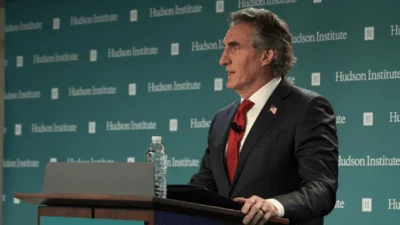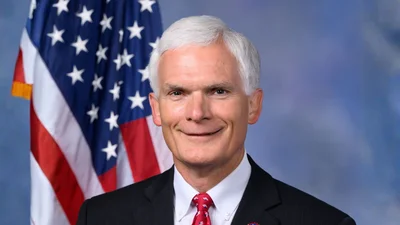Recent economic data indicate that U.S. growth picked up in the second quarter of 2025, recovering from a slower first quarter. Monthly payroll job creation was stronger, and the unemployment rate stayed just above 4 percent. As of June, 671,000 payroll jobs have been created since the start of this Administration.
Inflation readings were mostly stable or lower during the second quarter except for energy prices, which increased amid volatility. Key inflation drivers like housing and core non-energy services continued to moderate. Expectations for improved productivity growth may also help limit future inflation.
Official data on real Gross Domestic Product (GDP) for the second quarter will be released on July 30. However, high-frequency indicators suggest a strong rebound in growth. The Wall Street Journal’s quarterly survey published on July 12 forecasts median GDP growth at an annual rate of 2.3 percent for Q2—a turnaround from a 0.5 percent decline in Q1—with estimates ranging from 1.6 to 2.7 percent among surveyed forecasters.
The passage of fiscal legislation such as the One Big Beautiful Act and delays in changes to reciprocal tariff rates contributed to these forecasts by reducing policy uncertainty and boosting capital expenditures.
Labor market indicators showed improvement with total payroll job growth averaging 150,000 per month in Q2, up from 111,000 per month in Q1. Private sector hiring also increased, though it remains below post-pandemic highs but is still adequate for current economic needs.
Unemployment rates over the past fourteen months ranged between 4.0 and 4.2 percent—close to Congressional Budget Office estimates for non-cyclical unemployment levels that do not create upward pressure on inflation.
Labor force participation ticked down slightly overall but remained solid among prime-age workers (ages 25-54), who saw participation rise to an average of 83.5 percent in Q2—above pre-pandemic peaks.
Job openings averaged about 7.6 million during April and May, up slightly since late last year; vacancies per unemployed worker held steady at around one opening per job seeker.
Inflation pressures were limited overall in Q2 according to several indicators:
- Twelve-month consumer price index (CPI) inflation rose to an annual rate of 2.7 percent as of June due mainly to base effects.
- Second-quarter CPI inflation ran at a more moderate annualized pace of 2.4 percent.
- Energy price inflation accelerated after declines earlier this year.
- Food price increases slowed on a monthly basis but remained higher year-over-year.
- Core CPI (excluding food and energy) averaged monthly gains consistent with an annualized rate of about 2.4 percent—well below its post-pandemic peak.
- Housing-related rent inflation stabilized while non-housing core service prices moderated due largely to normalization in auto insurance rates and airline fares.
- PCE price index data showed similar trends with twelve-month headline PCE inflation slowing from earlier levels; as of May it stood at just above the Federal Reserve’s target at around 2.3 percent annually.
Economists’ recession probability estimates fell recently: The Wall Street Journal’s July survey put recession risk at one-third over the next twelve months compared with nearly half three months ago.
While labor markets are healthy overall, some measures remain subdued relative to prior expansions—for example, private-sector hiring rates are still low compared with those seen before the pandemic recovery period began; however, layoff rates are also low by historical standards.
Household finances appear strong: Total household assets grew by $6 trillion over twelve months ending Q1–2025 thanks mainly to rising equity values as major stock indexes hit new highs this summer: The S&P500 gained over seven percent since December while other indices posted similar gains (https://www.wsj.com/market-data/stocks/us/indexes). Delinquency rates rose primarily because student loan reporting resumed after pandemic-era suspensions; excluding student loans there was little change or only slight increases across most credit categories according to New York Fed data (https://www.newyorkfed.org/microeconomics/hhdc.html).
In summary, administration officials say they have advanced policies aimed at preventing tax increases, controlling spending and encouraging investment—all intended “to bring prosperity to all Americans.” They add that ongoing trade negotiations seek “to put American citizens first” while domestic reforms focus on limiting inflation risks and supporting supply-side strength through deregulation and expanded energy production.





